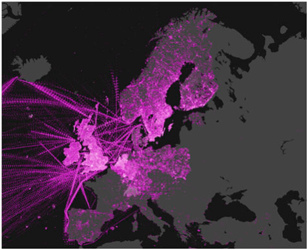The Aichi Biodiversity Targets of the United Nations' Strategic Plan for Biodiversity set ambitious goals for protecting biodiversity from further decline. Increased efforts are urgently needed to achieve these targets by 2020. The availability of comprehensive, sound and up-to-date biodiversity data is a key requirement to implement policies, strategies and actions to address biodiversity loss, monitor progress towards biodiversity targets, as well as to assess the current status and future trends of biodiversity. Key gaps, however, remain in our knowledge of biodiversity and associated ecosystem services. These are mostly a result of barriers preventing existing data from being discoverable, accessible and digestible. In this paper, we describe what regional Biodiversity Observation Networks (BONs) can do to address these barriers using the European Biodiversity Observation Network (EU BON) as an example. We conclude that there is an urgent need for a paradigm shift in how biodiversity data are collected, stored, shared and streamlined in order to tackle the many sustainable development challenges ahead. We need a shift towards an integrative biodiversity information framework, starting from collection to the final interpretation and packaging of data. informacion[at]ebd.csic.es: Wetzel et al (2015) The roles and contributions of Biodiversity Observation Networks (BONs) in better tracking progress to 2020 biodiversity targets: a European case study. Biodiversity 16:2-3, 137-149, DOI: 10.1080/14888386.2015.1075902
www.tandfonline.com/doi/full/10.1080/14888386.2015.1075902

 Las altas temperaturas están provocando que las lagunas y las marismas de Doñana pierdan agua rápidamente
Las altas temperaturas están provocando que las lagunas y las marismas de Doñana pierdan agua rápidamente




